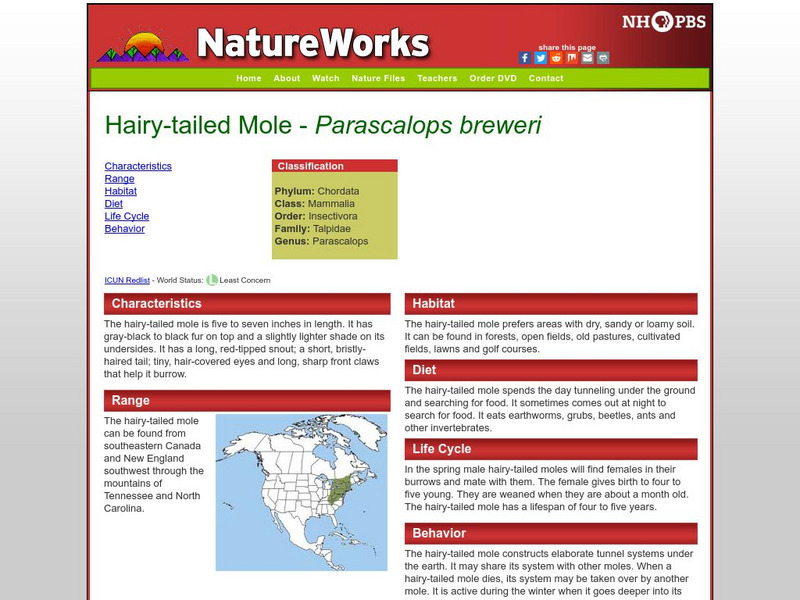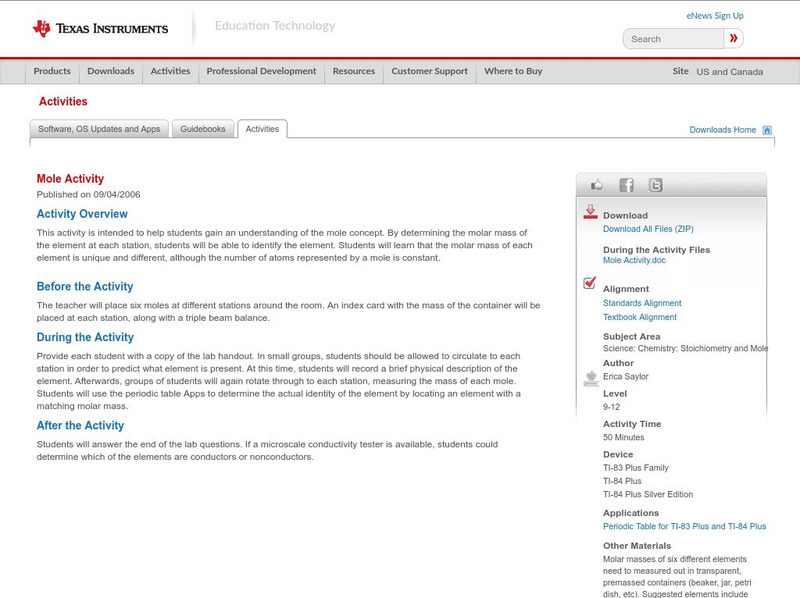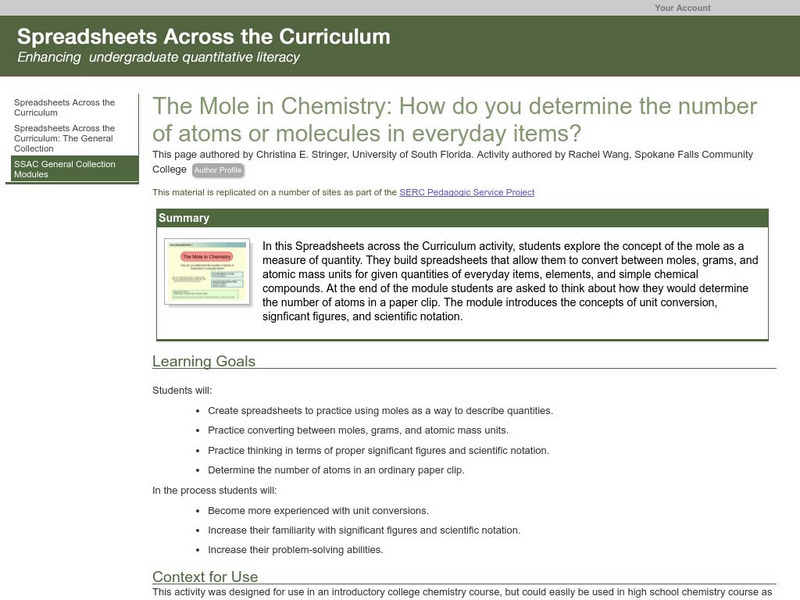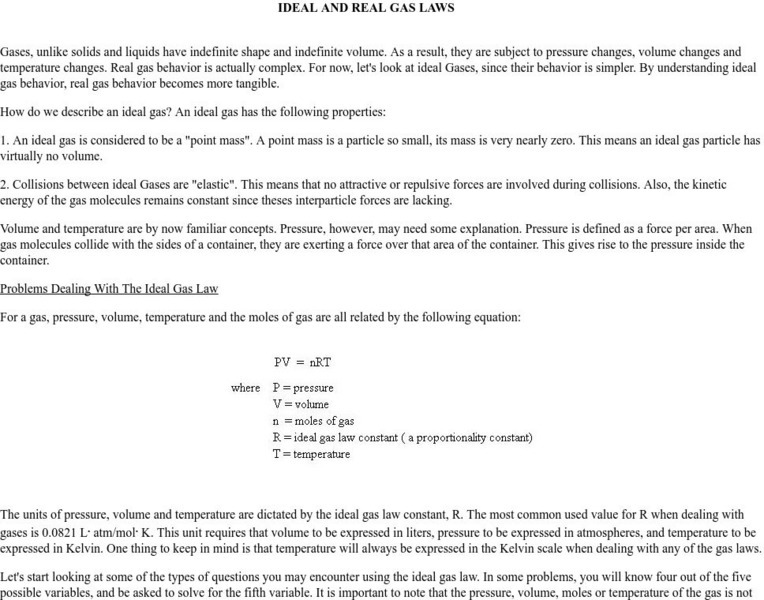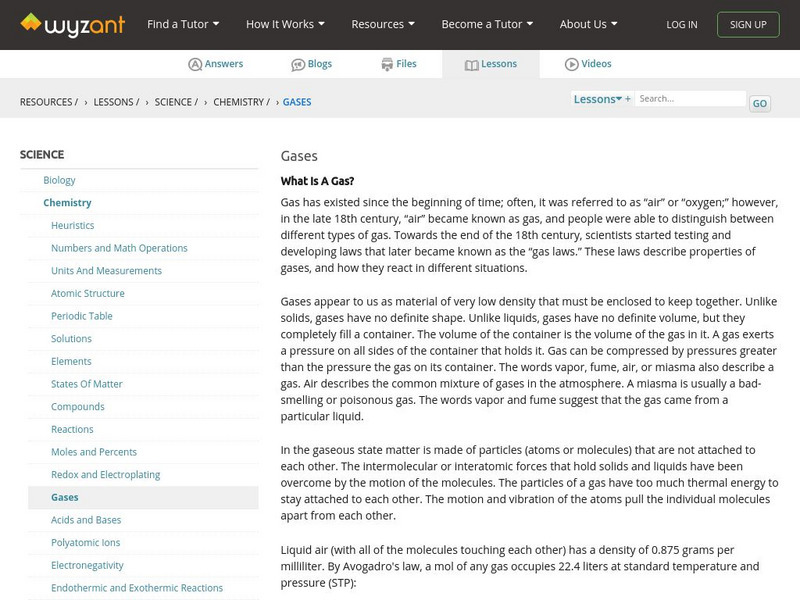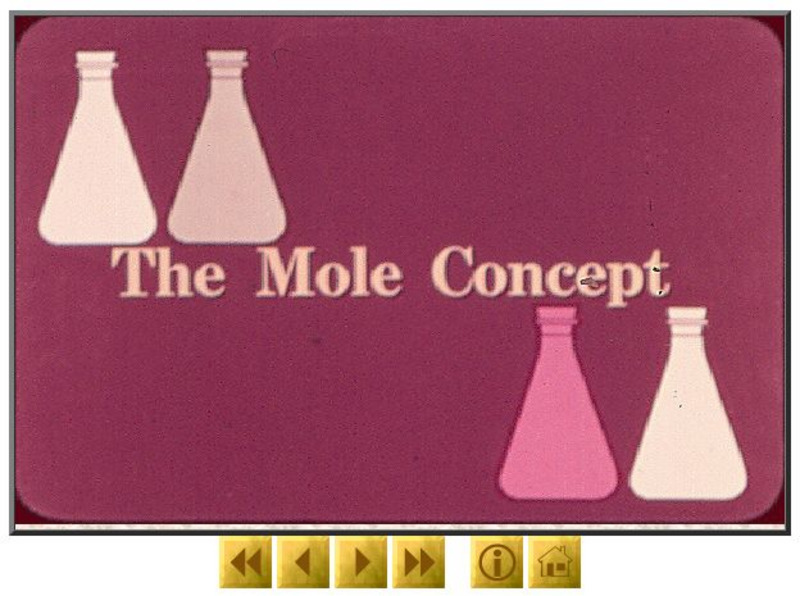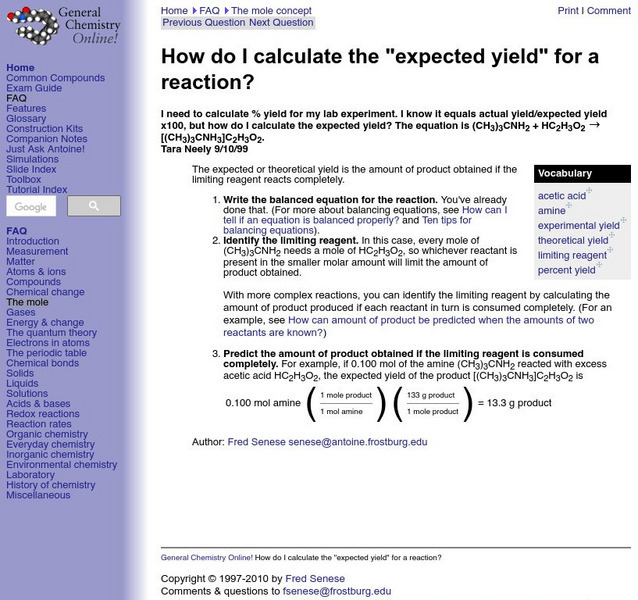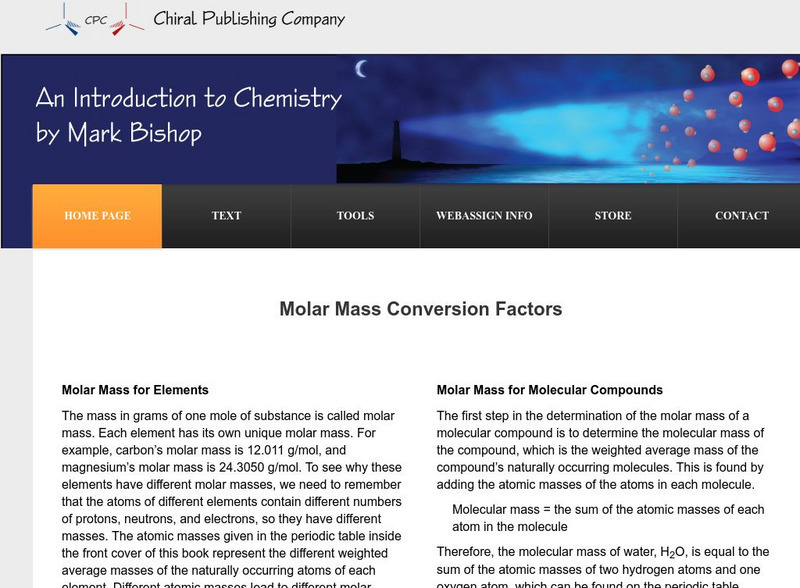California State University
Csudh Project for Chemistry: Elements, Moles, and Masses
Using a Periodic table with a list of atomic weights for reference, practice figuring moles of 103 elements.
PBS
Nh Pbs: Nature Works: Hairy Tailed Mole
Discover what makes the Hairy-Tailed Mole unique? This site features photographs of this insectivore and information ranging from characteristics and habitat to life cycle and behavior.
Texas Instruments
Texas Instruments: Mole
This activity is designed to assess the comprehension of concepts related to moles.
Texas Instruments
Texas Instruments: Mole Activity
This activity is intended to help students gain an understanding of the mole concept. By determining the molar mass of the element at each station, students will be able to identify the element. Students will learn that the molar mass of...
Science Education Resource Center at Carleton College
Serc: The Mole in Chemistry: Determining the Number of Atoms in Everyday Items
Students explore the concept of the mole as a measure of quantity. They build spreadsheets that allow them to convert between moles, grams, and atomic mass units for given quantities of everyday items, elements, and simple chemical...
Simon Fraser University
Chem1 Virtual Textbook: Mixtures of Gases
The General Chemistry Virtual Textbook, or Chem 1, is broken into several sections covering various aspects of topics related to chemistry. This section deals with gases and specifically mole fractions and volumes.
Simon Fraser University
Chem1 Virtual Textbook: Moles and Their Uses
As part of the "Basic Atomics" section of the Virtual Textbook, this site examines moles. The information presented defines moles in relation to Avogadro's number and then goes on to describe molar mass and molar volume.
Towson University
Towson University: Ideal and Real Gas Laws
The ideal gas law is stated and explained at this site from the Towson University. It is then used to derive the other gas laws (Charles, Boyle's, Gay-Lussac's, Avogadro's, combined, etc.). Other gas law relationships are discussed....
Other
Brinkster: All About Mole Calculations
Step by step instructions on how to solve mole problems in chemistry. Examples are included, along with diagrams and detailed explanations.
Other
Chris Johnson: Amedeo Avogadro
This site deals with Amedeo Avogadro, his life, his contributions to chemistry, and his famous number.
Wyzant
Wyzant: Chem Tutor: Gases
A lengthy page covering most all the gas laws. Each law is described in words and stated as an equation. The use of each law in solving problems is demonstrated. Some problem-solving tips are provided. There are 23 practice problems with...
Iowa State University
Iowa State University: Argument for Scientific Realism
This page from Iowa State University describes the various experimental ways that Avogadro's number has been determined.
Other
Lock Haven: Glossary of Frequently Misused or Misunderstood Physics Terms
A page, written by Donald E. Simanek of Lock Haven University discusses misused and misunderstood physics terms and concepts. It reminds us that Avogadro's number is a constant, and should be treated as such.
Smithsonian Institution
Smithsonian National Zoo: Zoogoer Magazine: The Naked Truth About Mole Rats
Jill Locantore's article in Zoogoer magazine on mole-rats covers a variety of topics on the rats and discusses different types including the Palestine mole-rat and the Damaraland mole-rat.
Sophia Learning
Sophia: Ideal Gas Law Equation Examples: Lesson 1
This lesson will present several example math problems utilizing the ideal gas law. It is 1 of 2 in the series titled "Ideal Gas Law Equation Examples."
A-Z Animals
A Z Animals: Animal Facts: Mole (Talpidae)
Explore the world of the Mole and discover information on the physical characteristics, habitat, diet, and breeding of this small mammal. Includes images and statistics.
CK-12 Foundation
Ck 12: Plix Series: Gas Density: Mass, Volume and the Mole
[Free Registration/Login Required] Find out what mathematical function to perform when converting between particles and moles. Then answer one challenge question about the topic.
Upper Canada District School Board
Tom Stretton's Chemistry Pages: The Mole Concept
Learn about the chemistry of moles through this slideshow.
Frostburg State University
General Chemistry Online: Faq the Mole Concept
This FAQ site over general chemistry concepts presents the question: "Why are moles used?" It explains what moles are and how they can be used to count molecules and how grams can be turned into moles.
Oswego City School District
Regents Exam Prep Center: Moles & Stoichiometry: Moles Resource
A nice page of links to follow for learning about moles. Contains links to sites that have explanations of moles and molar mass, practice problems, and more.
Text Project
Text Project: Fyi for Kids: Vol. 3, Issue 4: Moles [Pdf]
This magazine article is about moles; it discusses how they dig underground, what they look like, and what they eat. It also explains that they help the farmer even though many people consider them a pest because they tear up the lawn.
Frostburg State University
General Chemistry Online: Expected Yield
Frostburg State University provides an example of a problem dealing with how to find expected yield. Includes step-by-step directions on how to solve the problem.
Chiral Publishing
Chiral Publishing: An Introduction to Chemistry: Molar Mass Conversion Factors
Read how to use molar mass equations to find conversion factors and molecular compounds. View several examples using given formulas for molar mass.



